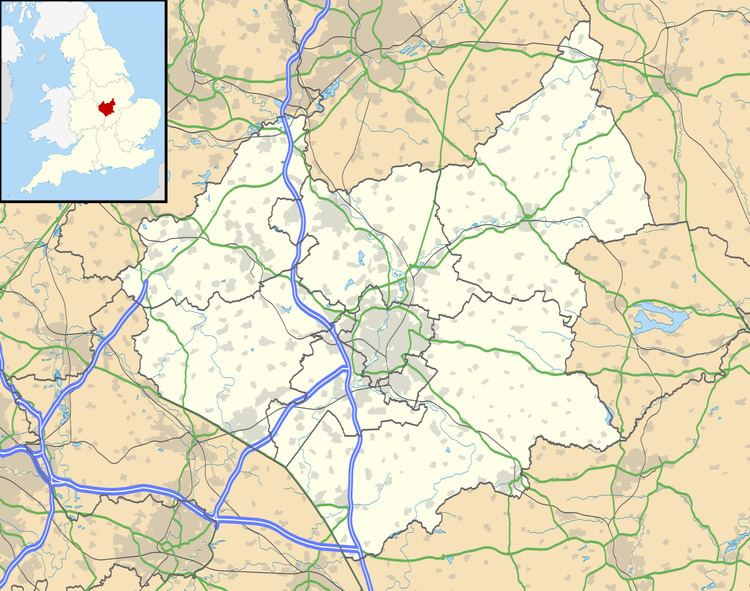Elevation AMSL 407 ft / 124 m 0 0 Owner Ministry of Defence | In use 1940-1987 (1987) 00/00 0 Year built 1939 | |
 | ||
Location | ||
Royal Air Force Bitteswell or more simply RAF Bitteswell is a former Royal Air Force station located 2.0 miles (3.2 km) west of Lutterworth, Leicestershire and 6.1 miles (9.8 km) north of Rugby, Warwickshire, England.
Contents
- Second World War
- Post war units
- Aircraft manufacture
- Aircraft operated
- Death of Hugh Reeves
- Warbirds of Great Britain
- Current use
- References
RAF Bitteswell opened in June 1940 and closed in December 1987. The base had one B1 Hangar and two T2 Hangars. The original grass runways were replaced between July and December 1941 with concrete and asphalt.
Second World War
RAF Bitteswell was home to many different units and aircraft, such as No. 1513 (Beam Approach Training) Flight (BAT Flt) flying Airspeed Oxfords from RAF Bramcote, RAF Lindley and Bitteswell between 23 October 1942 and 13 May 1946.
A large number of operational training units (OTU) were based at the airfield. OTU were units which taught flying, navigation and basic Morse code. The difference between OTUs and other training units were that the OTUs performed live missions such as bombing (like the 1,000 Bomber raids), air sea rescue and occasionally mine laying. No.18 Operational Training Unit (OTU) flying the Avro Anson, Fairey Battle and the Vickers Wellington again flying from Bramcote, Nuneaton and Bitteswell. The unit was operational from 14 November 1940 and 25 January 1943 and was RAF Bomber Commands Polish training unit.
Post war units
A number of units used the airfield as an satellite to disperse aircraft and for maintenance such as Transport Command Aircrew Examination Unit from RAF Bramcote from December 1945 until August 1946, No. 266 Maintenance Unit RAF between January 1946 and 1947 and No. 20 Service Flying Training School from RAF Church Lawford used Bitteswell as an relief landing ground between July 1946 and May 1947.
Aircraft manufacture
Between 1943 and March 1983 the airfield was used by a number of aircraft manufacturers including Armstrong Whitworth Aircraft (AWA), Whitworth Gloster, Hawker Siddeley and British Aerospace for final assembly, flight testing and overhauls of many of the companies aircraft.
Aircraft operated
Data from
Death of Hugh Reeves
Hugh Reeves was a British inventor and engineer. He was involved in a project to reduce noise in jet engines. While carrying out tests at RAF Bitteswell on a Hawker Hunter Mark V fitted with a Sapphire engine, he was suddenly drawn into the intake of the silencer and was killed.
Warbirds of Great Britain
In 1984 the airfield was sold to Doug Arnold to store some of his collection of "Warbirds of Great Britain" classic aircraft, including several Spitfires, a P-51D Mustang, a B-17G Flying Fortress and a Lancaster. It was also used for two Drag Racing meets in 1985. In 1987 it was sold for development as a Distribution Park.
Current use
The airfield is now a large business park called Magna Park in which many roads have names relating to aircraft e.g. Wellington Parkway, Buccaneer Way, Hunter Boulevard and Vulcan Way.
